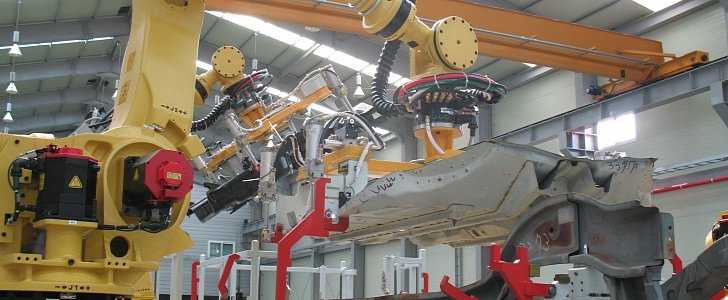A horrible accident that took place in July 2015 has led to a lawsuit against the company that operated robots in its facility, where a particular unit is claimed to have “gone rogue” and killed a human.
The accident took place on Ventra Ionia Main’ assembly line, where a technician named Wanda Holbrook was performing regular maintenance duties on units installed in sector 104. A robot assigned to area 103 somehow ended up in the wrong sector, where it crushed the 57-year-old technician to death.
Her spouse, William Holbrook, filed a wrongful death complaint in Michigan federal court, and it targets five robotics companies in North America.
Those corporations are accused of negligence and other behaviors that have led to the death of his spouse, who was killed by a robot that was not supposed to be present in the sector where she was working.
The assembly line manufactured bumpers and trailer hitches, and the company is a supplier for several automotive brands that have no relation to this incident.
According to the complaint filed in the Michigan federal court, seen on Courthouse News, it appears that the said robot operated irregularly when the accident happened.
Fortunately for all humans, not all robots can go haywire and kill us, but accidents can happen. Those accidents can be linked to programming errors that make let the robotic workers be present where they are not supposed to be, but they can also be related to labeling defects, which could lead to misguiding those robots. Regardless of the case, anything that is made by humans is subjected to error.
Any programmer can tell you that mistakes happen, and that it does not matter how long an app or software gets tested, but bugs will occur, and they require frequent patches to keep things operational.
The same goes for industrial robots, which need humans for repairs and maintenance. Evidently, they also need to be monitored, especially to prevent tragic situations like these.
Her spouse, William Holbrook, filed a wrongful death complaint in Michigan federal court, and it targets five robotics companies in North America.
Those corporations are accused of negligence and other behaviors that have led to the death of his spouse, who was killed by a robot that was not supposed to be present in the sector where she was working.
The assembly line manufactured bumpers and trailer hitches, and the company is a supplier for several automotive brands that have no relation to this incident.
According to the complaint filed in the Michigan federal court, seen on Courthouse News, it appears that the said robot operated irregularly when the accident happened.
Fortunately for all humans, not all robots can go haywire and kill us, but accidents can happen. Those accidents can be linked to programming errors that make let the robotic workers be present where they are not supposed to be, but they can also be related to labeling defects, which could lead to misguiding those robots. Regardless of the case, anything that is made by humans is subjected to error.
Any programmer can tell you that mistakes happen, and that it does not matter how long an app or software gets tested, but bugs will occur, and they require frequent patches to keep things operational.
The same goes for industrial robots, which need humans for repairs and maintenance. Evidently, they also need to be monitored, especially to prevent tragic situations like these.




